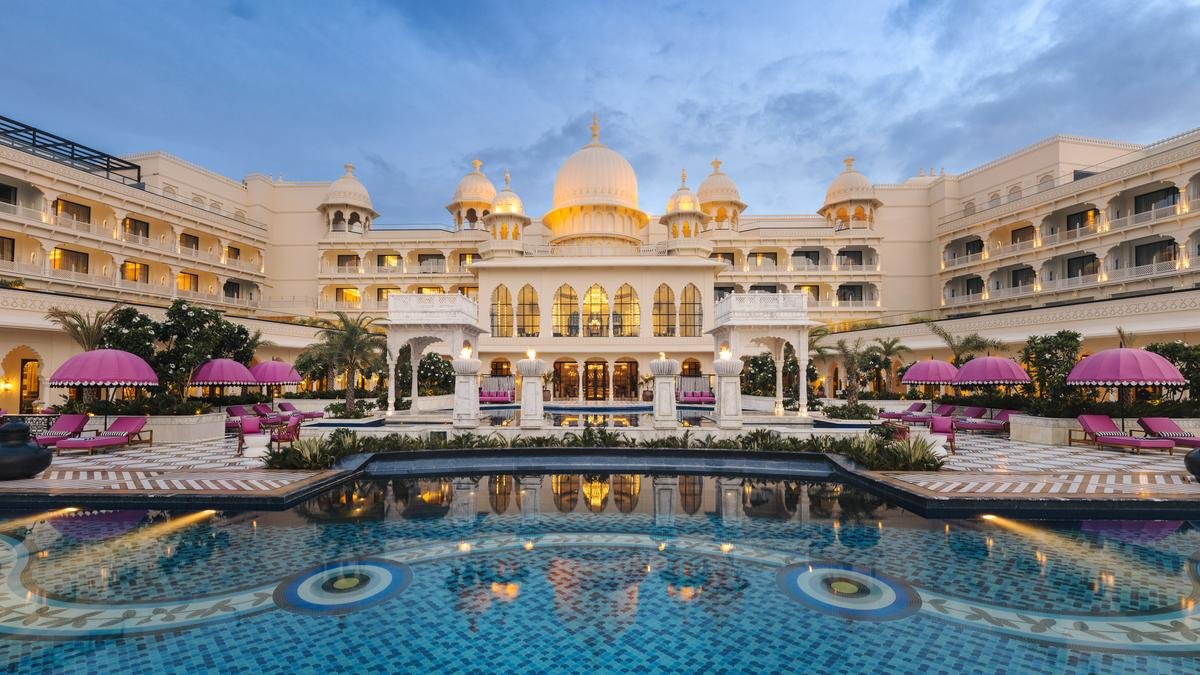After a 45-minute drive from the Maharana Pratap Airport to the Seesarma road in Udaipur, when I enter Fairmont Udaipur Palace hotel’s grand Raj Dwar, I am drawn to its distinct architectural style. Inspired by Mewar’s forts, particularly Chittorgarh and Kumbhalgarh, the facade reinterprets the aesthetic language of these two iconic forts to create a structure that feels both historically grounded and emotionally resonant, yet fully modern in its purpose and execution.

The palace’s elevated presence appearing to rise organically from the Aravalli landscape is inspired by the Chittorgarh Fort. It also takes cues from Kumbhalgarh, known for its massive encircling wall, in terms of stonework, textured facades, and ceremonial gateways.
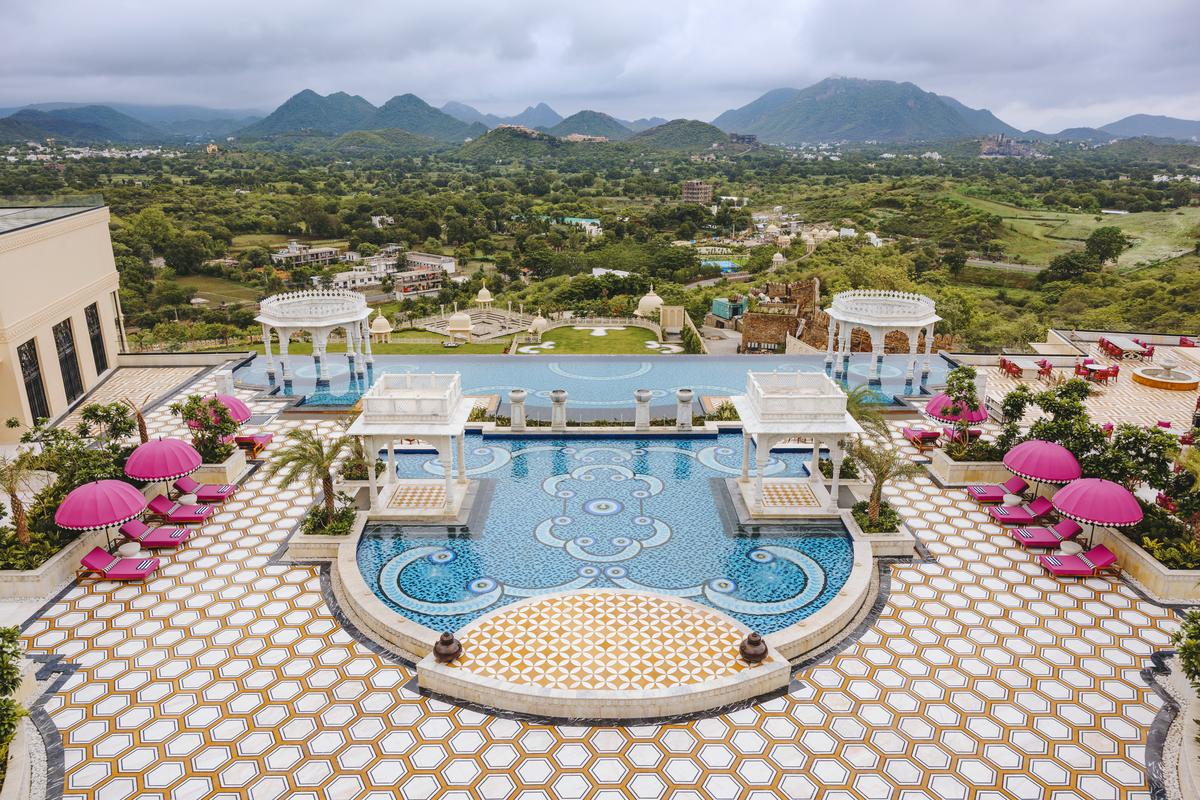
View of the Aravallis from the main pool
| Photo Credit:
Fairmont Udaipur Palace
The palace’s three inter-connected wings — Chandra Mahal, Agni Mahal and Surya Mahal — offer a view of the Aravallis that stands in contrast to the dry and parched locales of Rajasthan. I stay in a room with a private swing at the Surya Mahal. The palace draws from the elemental forces of Nature — sun, fire, water, air, and space. Fire reveals itself in the eternal mashaals that glow across the courtyards, with Agni Mahal, the radiant heart of the Palace.
Owned by Swati and Somesh Agarwal of Rockwood Hotels and Keystone Hotels, the 18-acre property has 327 rooms, seven suites with private pools, seven distinct venues for events, eight dining concepts and a wellness sanctuary. Malaysian company Designwilkes did the interiors of this property that opened this year.

This palace is not just built in stone and marble, but in stories, craftsmanship, and soul, says chairman and managing director Somesh, whose endeavour was never just to build a hotel but to ‘craft a world.’ “Udaipur has always been a jewel of India, and with Fairmont Udaipur Palace, we wanted to create a destination within a destination — where every guest feels like a modern maharaja or maharani.” Be it the hand-carved jharokhas or an architectural design reflecting opulence, the craftsmanship including its minute details is an ode to India’s royal heritage and Rajasthan’s timeless artistry.
Celebrating heritage
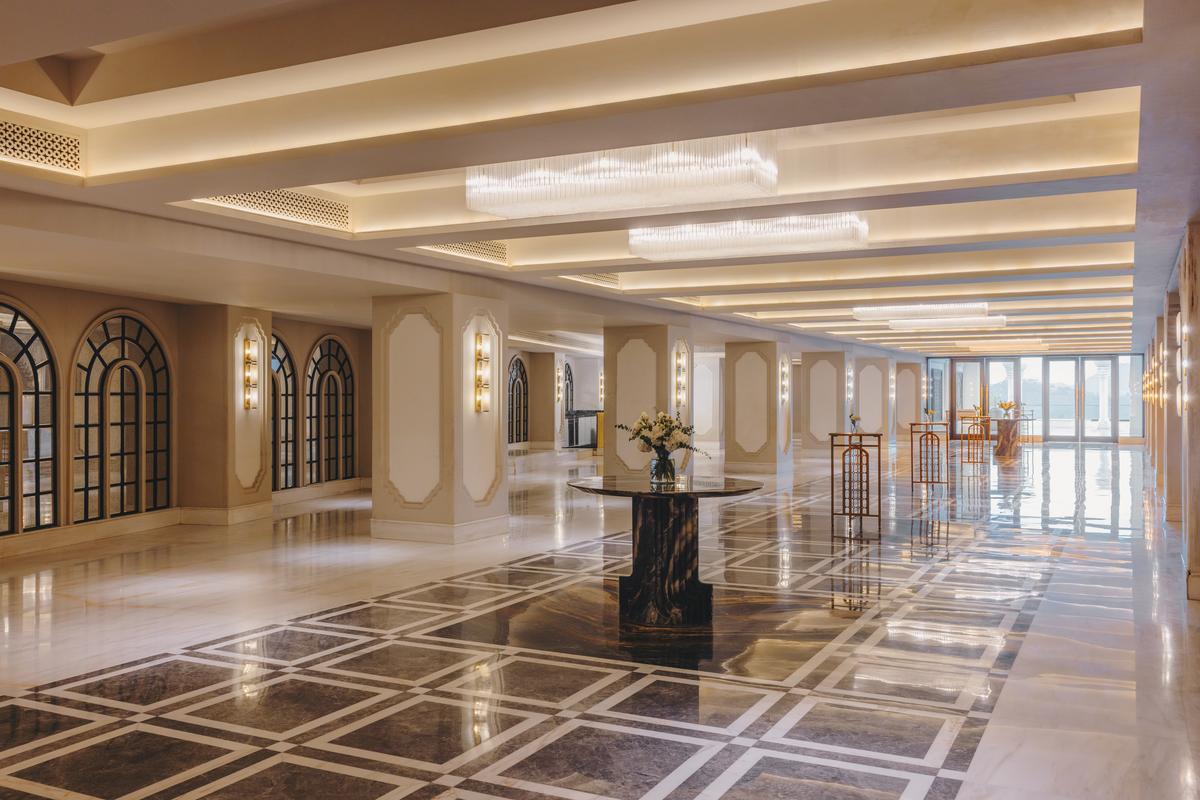
A stage for weddings and celebrations
| Photo Credit:
Fairmont Udaipur Palace
On touring the palace’s pavilions, gardens, colonnades and terraces, I observe panels at corridors, lobby, courtyards, elevator lobbies and alcoves, that sparkle with thikri work of Rajasthan featuring precisely cut mirrors arranged in symmetrical patterns. The thikri work is framed as art — strategically placed where movement slows or where it reflects light. Some of the other heritage techniques that one can look forward to at the property are pichwai artworks — hand-painted scenes inspired by traditional Nathdwara art, stone inlay and textured walls, artisanal woodwork and embroidered textiles.

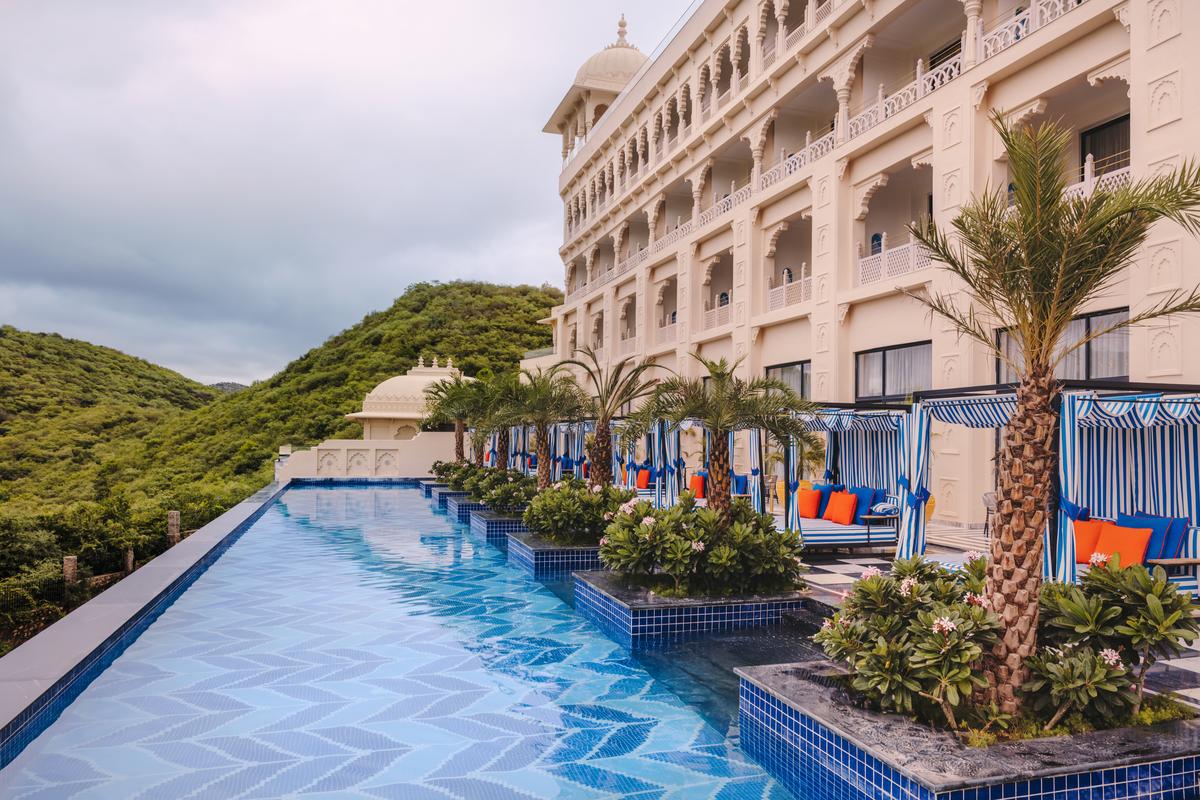
Royal comfort
| Photo Credit:
Fairmont Udaipur Palace
Master artisans of Pindwara village, around 100 kilometres from Udaipur, were involved in making pillars, domes and intricate marble trays at the palace. From carving 500 pillars to shaping its architectural details, the entire village was involved.
Dome’s day
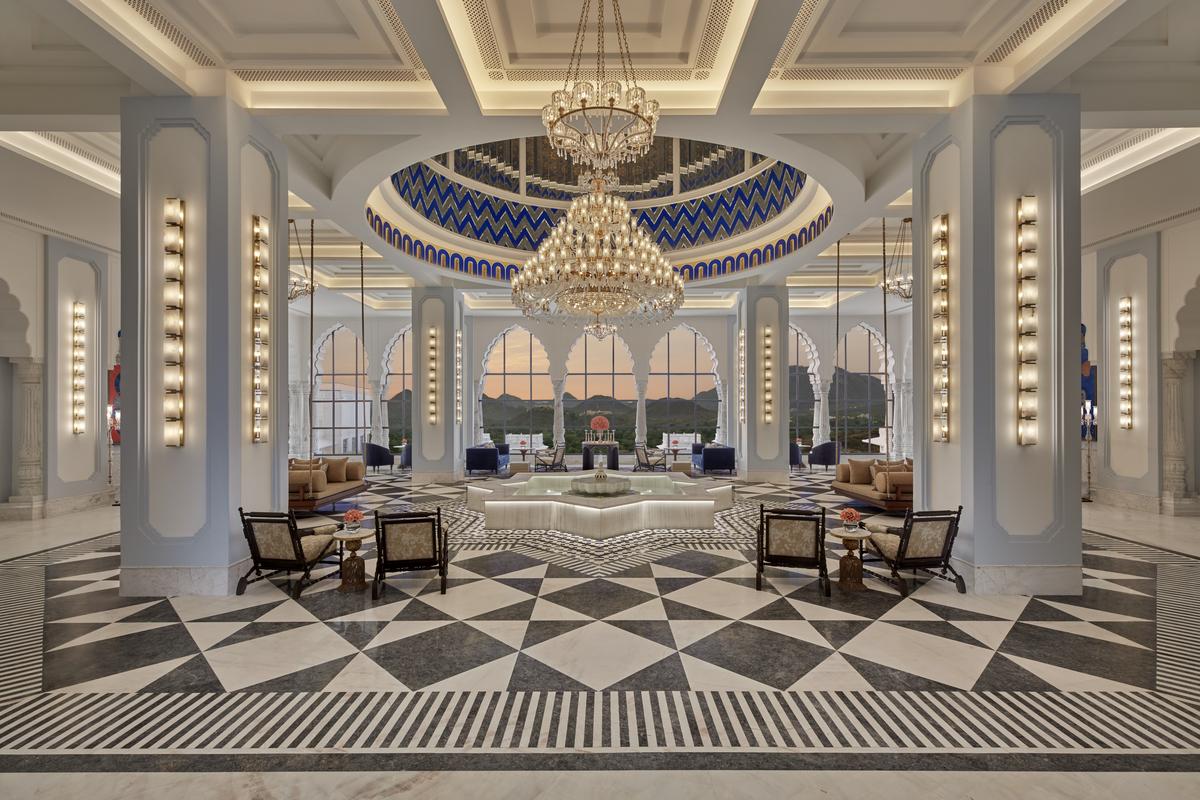
Lobby
| Photo Credit:
Fairmont Udaipur Palace
Udaipur’s architectural style is symbolic of both Rajputs and Mughals. The grand central dome and royal chandelier at the palace’s lobby is a marvel in itself. Over 100 artisans and craftspersons, working alongside architects and engineers, were involved in crafting it. The structure, we are told, was made after three attempts as the first two attempts felt either too ceremonial or too modern. The final design strikes a balance: a hand-painted dome that frames the Aravalli hills beyond — connecting earth to sky, heritage to horizon.
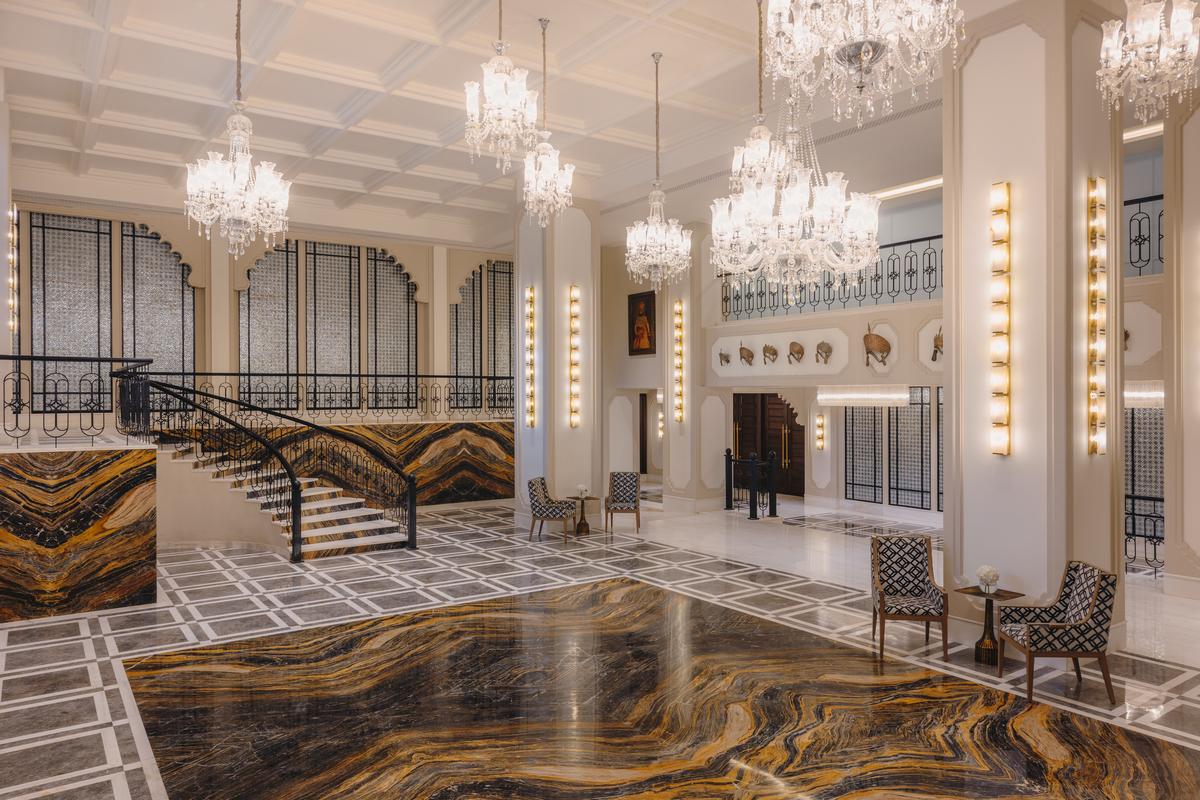
Sheesh mahal, for a Rajasthani food experience
| Photo Credit:
Fairmont Udaipur Palace
While the regular domes are circular, this 52-foot high cylindrical structure has a 30-foot diameter. With precisely symmetrical dimensions, the blocks are handcrafted to enhance its aesthetic appeal. Swati and Somesh envisioned the dome not just as an architectural feature, but an emotional threshold, a modern-day durbar hall ceiling that evokes both awe and serenity. The inspiration was from Mughal and Rajput domes, particularly those seen in the palaces of Udaipur and the grand courtyards of Fatehpur Sikri. The challenge was to achieve the right proportion and scale something grand, but not overpowering.
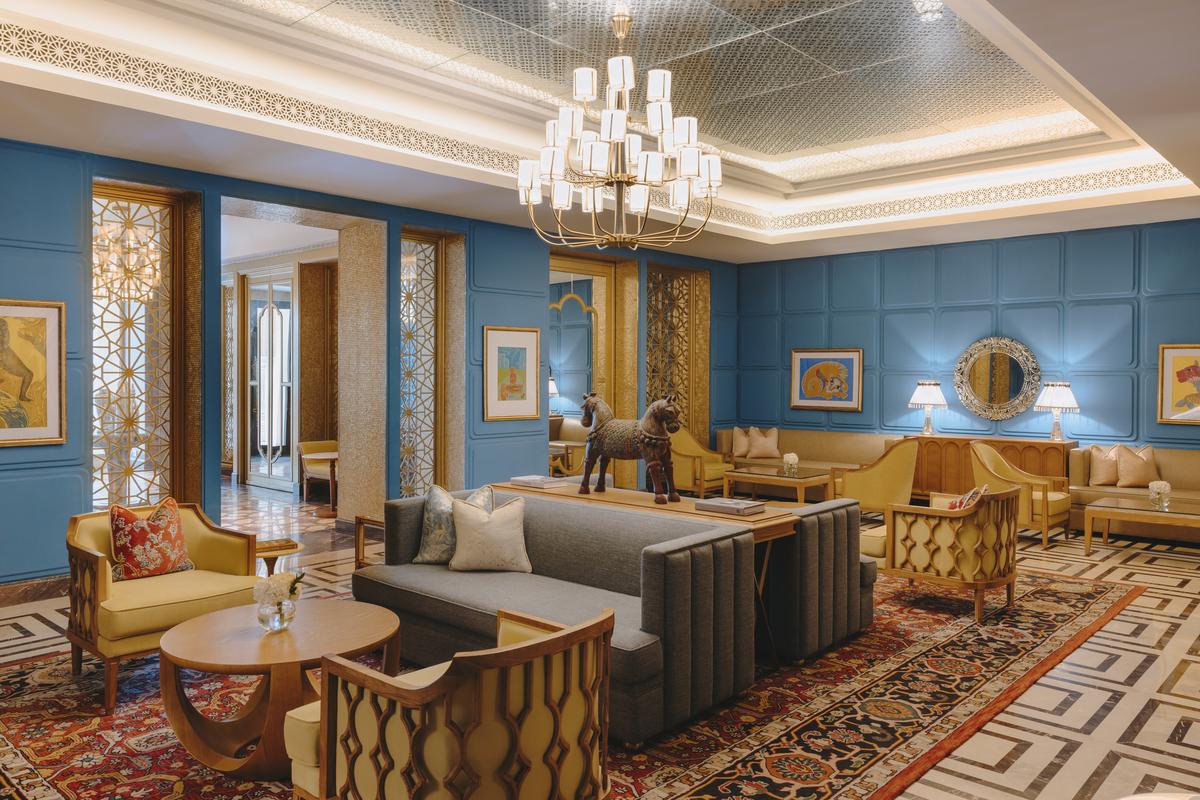
Dastaan lounge
| Photo Credit:
Fairmont Udaipur Palace
The lobby embraces an eclectic style — blending styles from different cultures and eras. For instance, the French Art Deco furniture is paired with Mughal-inspired textiles used in upholstery, drapery and tapestries featuring soft floral and garden motifs. It is layered with Rajasthani elements like thikri mirrorwork, hand-carved stone, and locally crafted details.

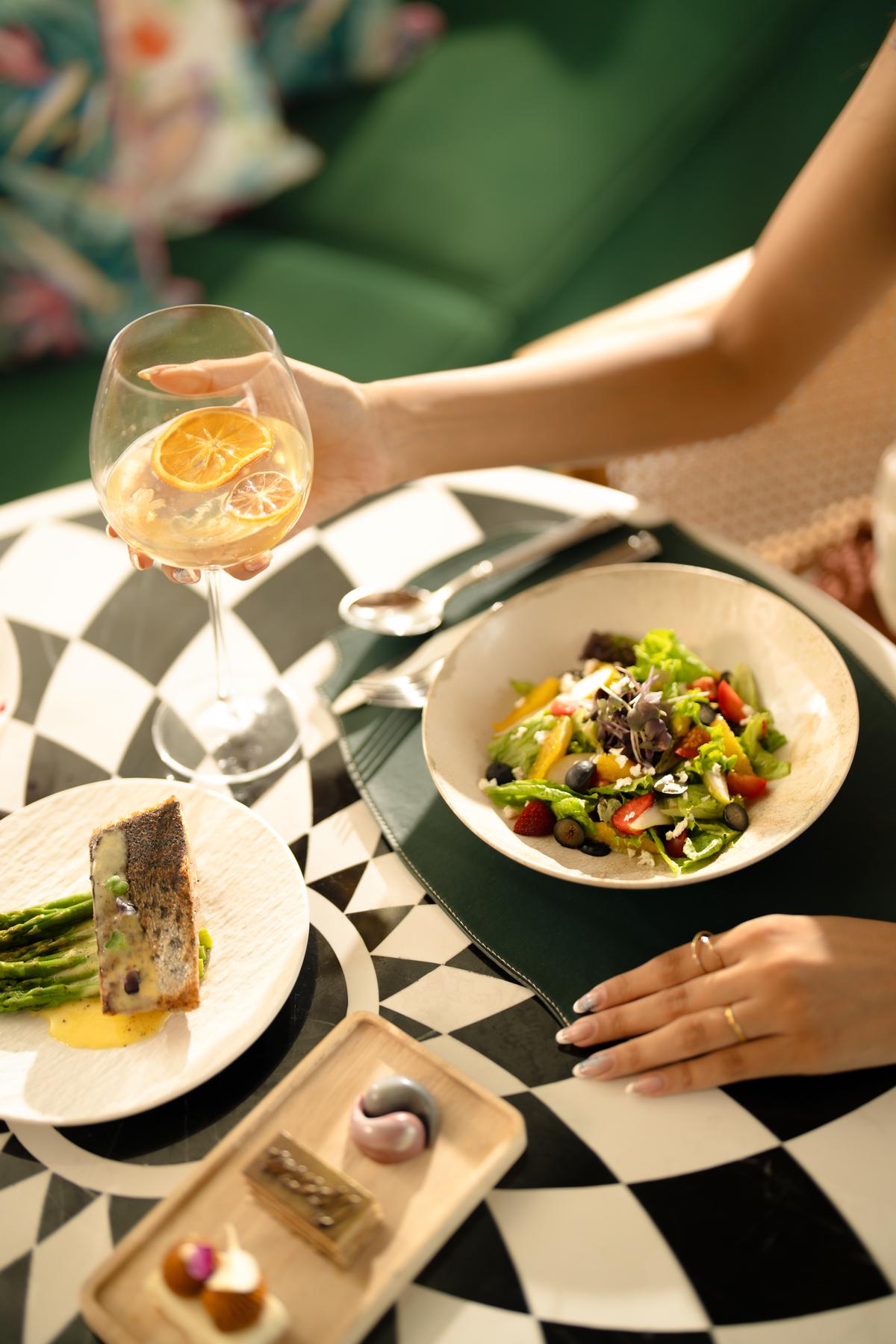
Bahaar, hub of global flavours
| Photo Credit:
Fairmont Udaipur Palace
Culinary experiences
At Sitara terrace, high tea includes the much-loved Rajasthani kachori of the Kota-Ajmer variety filled with dal (spiced lentils), served with kadhi (yoghurt based spicy and sour curry). Also try the grand Rajasthani thaali at Sheesh Mahal, a 56-item platter brought to the table by waiters accompanied with band baaja. It includes rotis, pulaos and lost Rajasthani recipes, like Watermelon ki subji (made with the fruit’s rind). Pre dinner cocktails are at Dahaad (roar of a leopard), which boasts an underlit onyx counter and a life-sized statue of a leopard. Try the Untamed Sour, featuring the raw elegance of bourbon, balanced with citrus, and Leopard’s Roar, a daring blend of vodka and scotch.
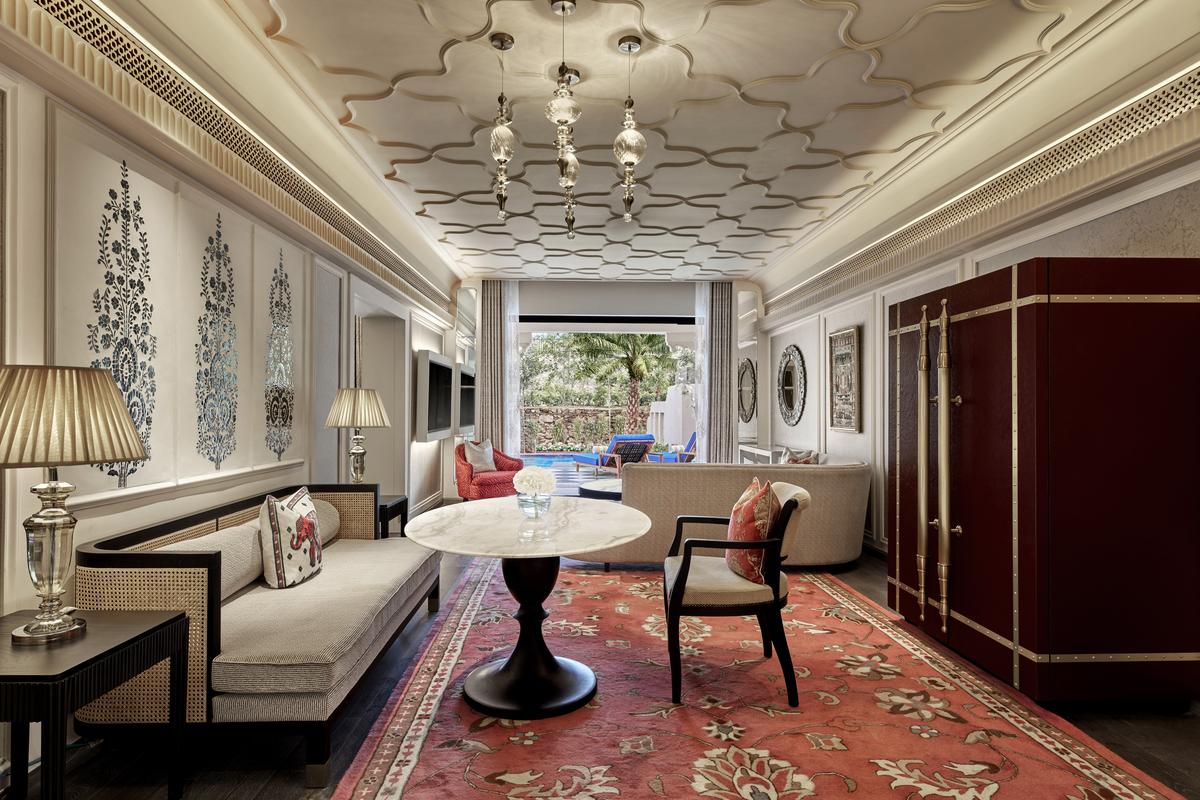
Suite with a plunge pool
| Photo Credit:
Fairmont Udaipur Palace
Culinary director Amitesh Virdi says that while he loves the diversity of cuisines presented in the menu — Rajasthani, Asian, Italian, global tapas and a Pintxo selection for the Palace bar, he is especially proud of the laal maas, tandoori guchhi and dal bati. He also takes pride in their version of pizzas, which are similar to the crisp thin Tirata pizzas from the Emilia-Romagna region of Italy.
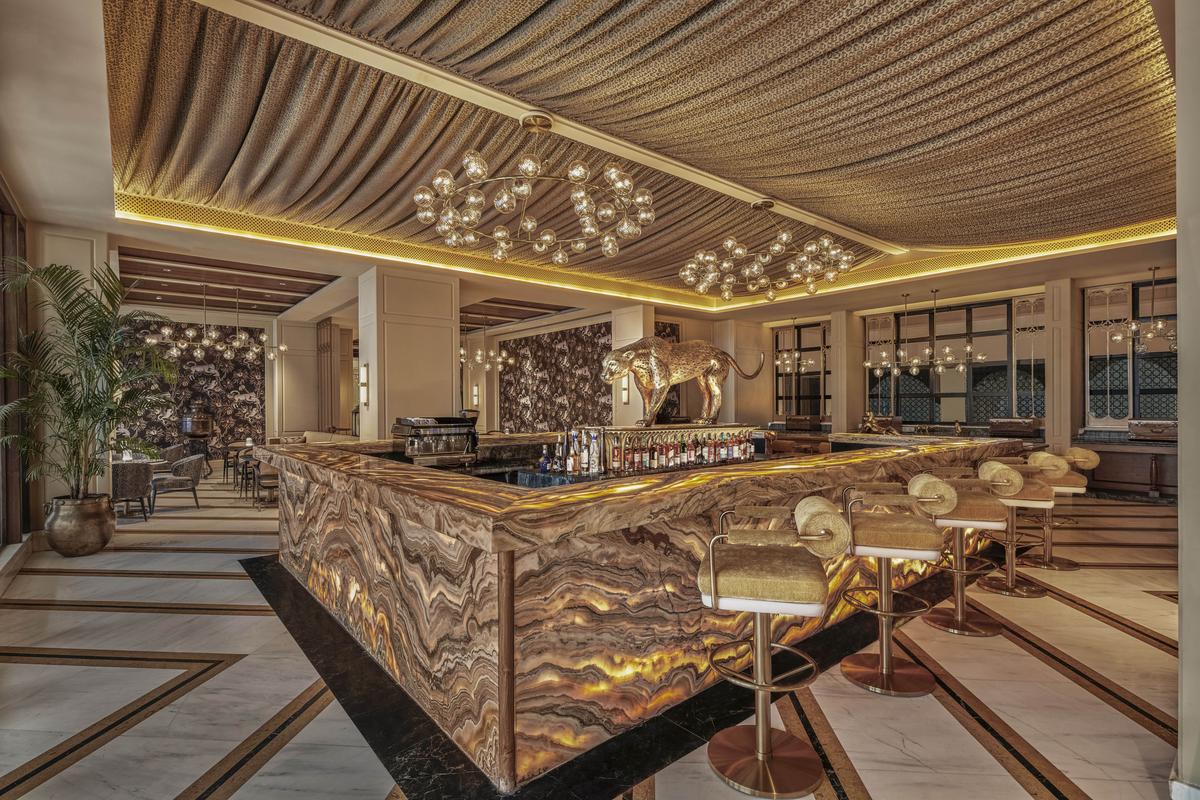
Statue of leopard in Dahaad
| Photo Credit:
Fairmont Udaipur Palace
Since the Aravallis are home to around 60 leopards, the palace pays homage to the wild animal through artworks, life-sized statue (Dahaad) and even as a motif on the stirrer. The sculptural leopard was developed in collaboration with local artisans, who brought the design to life using traditional metalworking techniques and the motif was designed in-house to reflect the bar’s central feature to create a thematic continuity from large-scale statement pieces to the smallest guest detail. It is a way of honouring the land’s original inhabitants, not royals and artisans, but also the wildlife that has long roamed these hills.
The writer was in Udaipur at the invitation of Fairmont Udaipur Palace.
Published – October 27, 2025 04:04 pm IST
